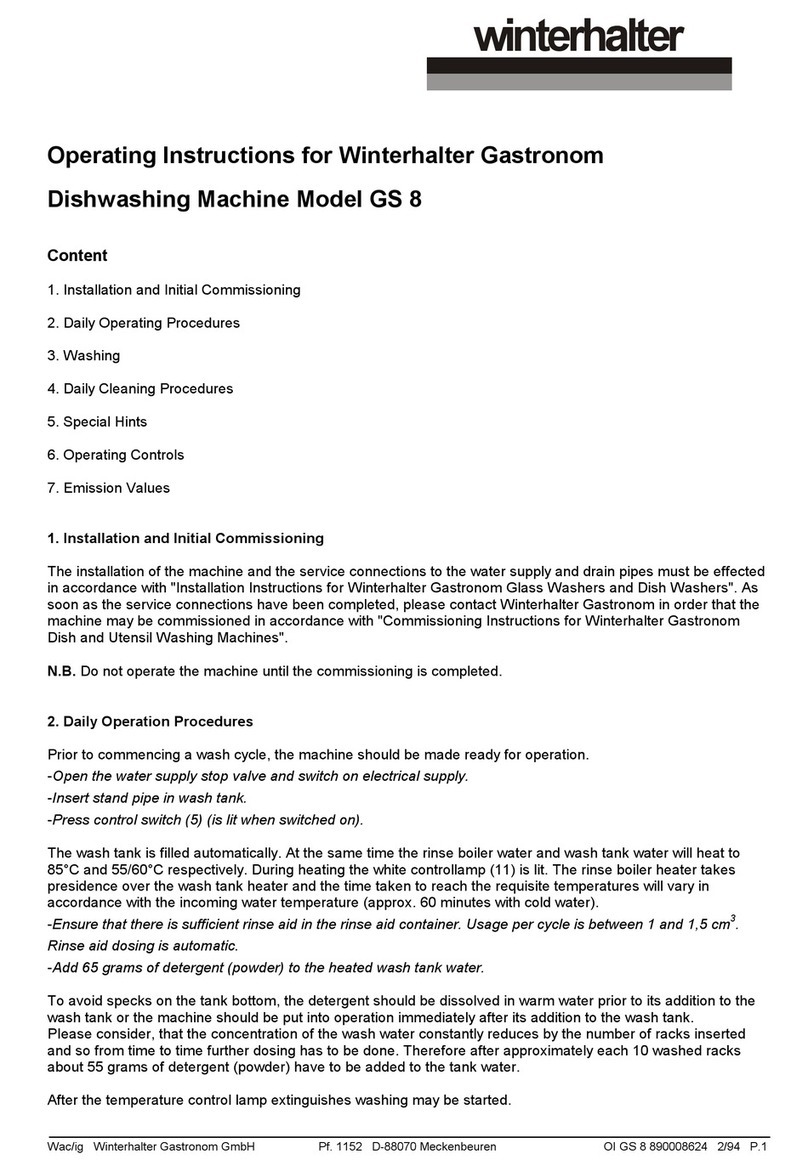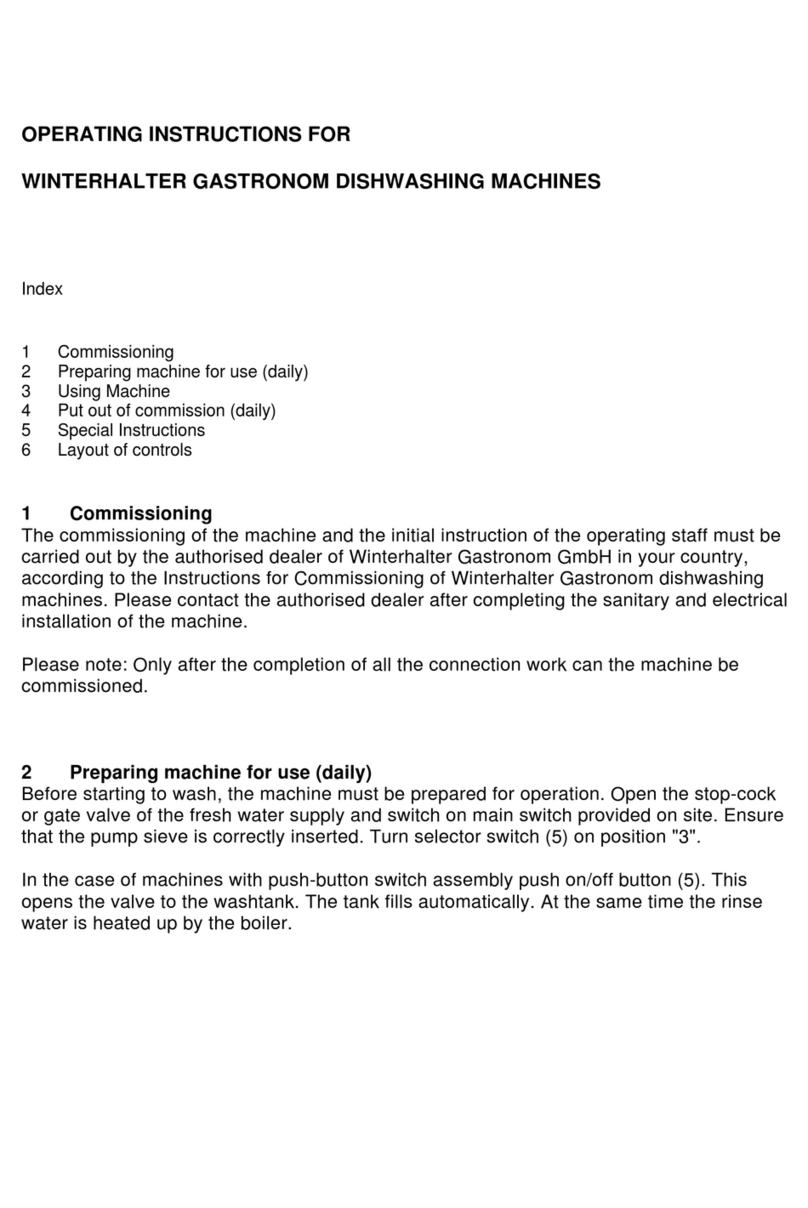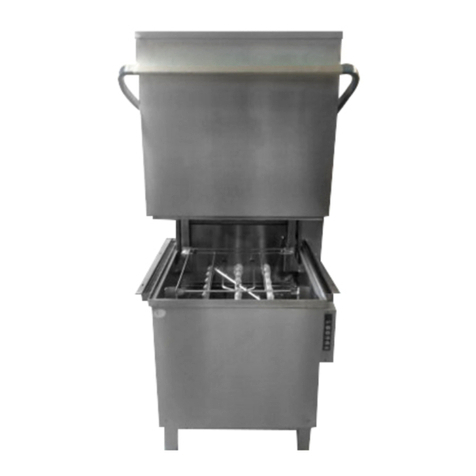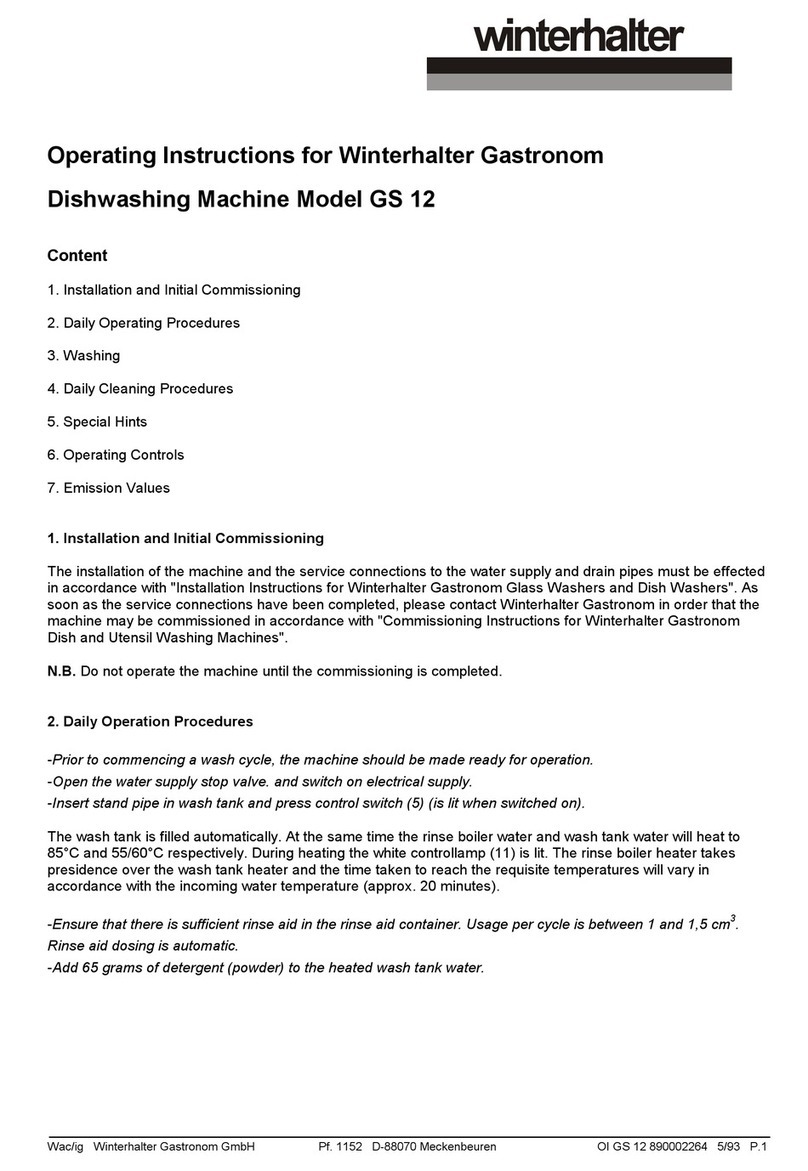4Winterhalter Gastronom GmbH
Postfach 1152
D-88070 Meckenbeuren
89000825
10/98 sch
NOTE
The measuring cup supplied with our detergent
containers holds approx. 200g of powder. One
heaped dessertspoonful of powder is equivalent to
approx. 20g. To avoid staining the tank floor, it is
advisable to dissolve the detergent in hot water
before adding it or to pour it onto the plastic
surface strainers.
NOTE
Only use detergent and rinse aid products
which are suitable for commercial dishwashers.
Observe the safety information printed on the
packaging.
We recommend the use of our Winterhalter
Gastronom detergent.
NOTE
If the machine is equipped with an automatic
detergent dosing device (optional extra), there is
no need to add detergent manually.
See the corresponding instruction manual on how
to use this device.
6. Topping up the regenerating salt
(GS 14E, GS 15E)
In models GS 14E and GS 15E with built-in water
softeners (SoftMatik), the "REG" indicator (7)
lights up when the salt level in the container is low.
In this case, fill the salt container with special
regenerating salt for water softeners.
The salt container must only be filled
with regenerating salt! Any other
chemicals, e.g. detergent or rinse aid,
will inevitably result in damage to the machine.
The salt should be added in fine-grain form (max.
5-7 mm grain size): salt tablets are not suitable.
We recommend the use of our Winterhalter
SoftMatik regenerating salt.
Procedure:
•Unscrew the cap of the salt container.
•Fill the container with one bag (500g) of
Winterhalter Softmatik regerating salt
using the supplied funnel.
•Remove salt remnants from the screw thread
and sealing surface of the salt container.
•Screw the cap of the salt container back on
again and tighten it by hand.
•Activate Programme 1 by pressing key (3).
7. Wash cycle
Arrange the soiled kitchenware correctly in the
rack, then push the rack into the machine and
close the door.
Select the right programme for the relevant degree
of soiling and press the button to start.
For lightly soiled items, you should select the
”Programme 1” button (3). Programme duration:
GS 14 approx. 150s = 24 racks/h
GS 14E approx. 150s = 24 racks/h
GS 15 approx. 75s = 48 racks/h
GS 15E approx. 120s = 30 racks/h
For heavily soiled items, select the ”Programme 2"
button (4). Programme duration:
GS 14 approx. 300s = 12 racks/h
GS 14E approx. 300s = 12 racks/h
GS 15 approx. 150s = 24 racks/h
GS 15E approx. 180s = 20 racks/h
Sequence of operations
•Circulation of detergent solution: intensive
cleaning from above and below.
•Freshwater rinse with water heated to 85°C
(containing rinse aid).
































